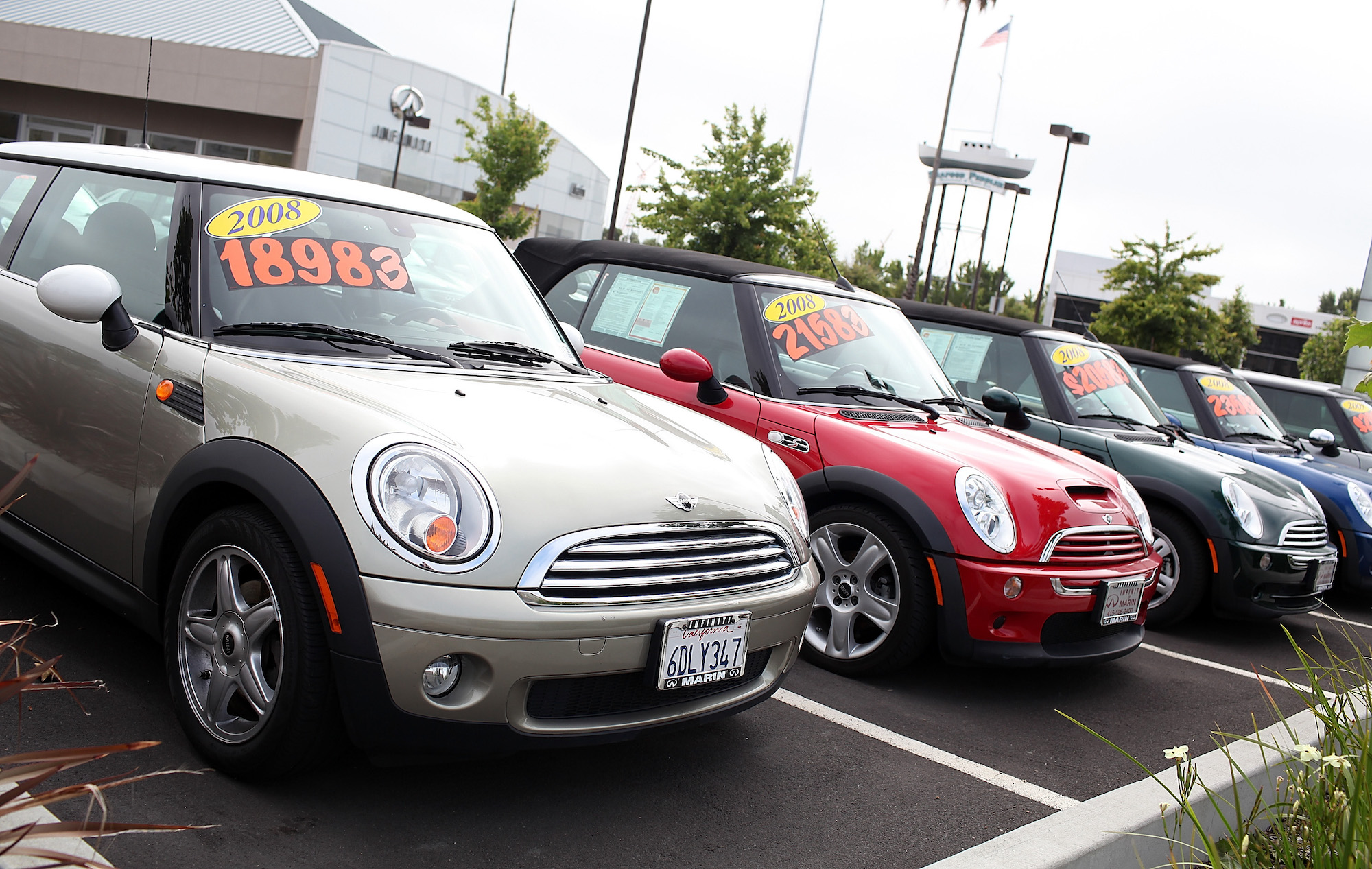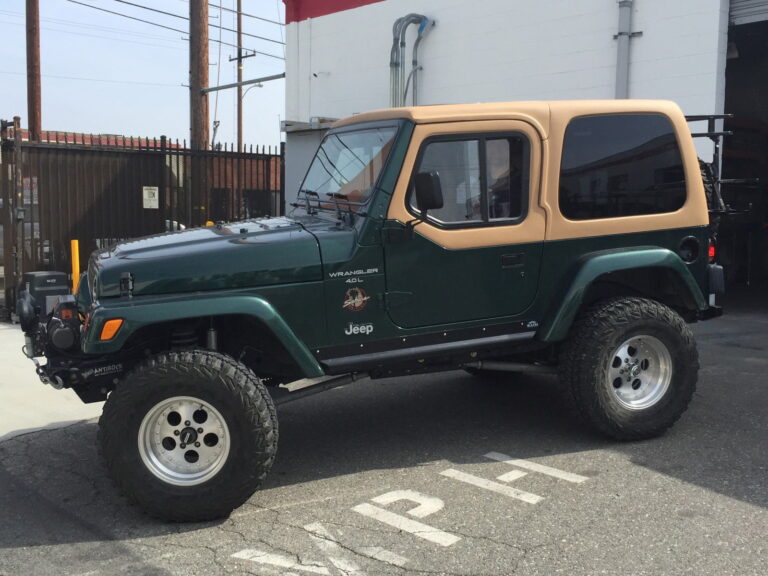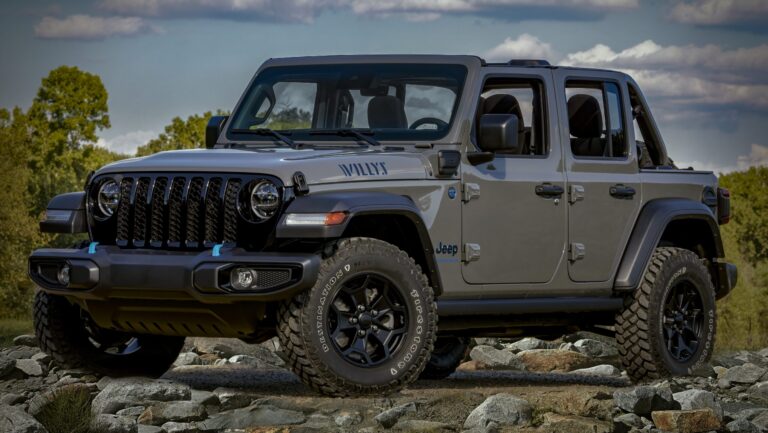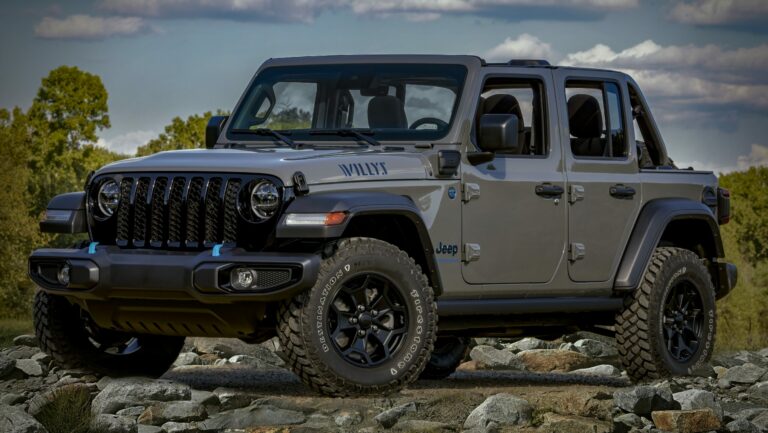Used Jeep Wrangler 2-Door For Sale: Your Comprehensive Guide (Addressing the ‘Unlimited’ Distinction)
Used Jeep Wrangler 2-Door For Sale: Your Comprehensive Guide (Addressing the ‘Unlimited’ Distinction) jeeps.truckstrend.com
The allure of a Jeep Wrangler is undeniable. Its iconic silhouette, unparalleled off-road capability, and a sense of freedom that few other vehicles can match make it a dream machine for many. When considering a used model, the 2-door Jeep Wrangler stands out as the quintessential representation of this legendary vehicle.
Before we dive deep, let’s address a common point of confusion: the term "Unlimited." The "Jeep Wrangler Unlimited" always refers to the 4-door version of the Wrangler. There is no such thing as a "Jeep Wrangler Unlimited 2-Door." The 2-door model is simply known as the "Jeep Wrangler." This article will focus entirely on the Used Jeep Wrangler 2-Door For Sale, providing a detailed guide for prospective buyers looking for that classic, compact, and highly capable off-road companion.
Used Jeep Wrangler 2-Door For Sale: Your Comprehensive Guide (Addressing the ‘Unlimited’ Distinction)
This guide will navigate the nuances of purchasing a used 2-door Wrangler, from understanding its generations to crucial inspection points, helping you make an informed decision and find the perfect rugged vehicle for your adventures.
Why Choose a Used 2-Door Jeep Wrangler?
The 2-door Jeep Wrangler offers a unique blend of heritage, capability, and raw appeal that sets it apart. Here’s why it continues to be a highly sought-after used vehicle:
- Classic Iconography: The 2-door Wrangler maintains the classic, shorter wheelbase design that harks back to its military origins. It’s the silhouette most people picture when they think of a "Jeep."
- Superior Maneuverability Off-Road: Its shorter wheelbase provides a better breakover angle and a tighter turning radius, making it incredibly agile on challenging trails, tight turns, and technical terrains where longer vehicles might struggle.
- Pure Off-Road Prowess: While both 2-door and 4-door Wranglers are highly capable, many purists argue the 2-door offers a more direct and connected off-road experience due to its compact size and lighter weight.
- Customization Heaven: The aftermarket for Jeep Wranglers is arguably the largest and most diverse in the automotive world. From lift kits and larger tires to winches, bumpers, and performance upgrades, you can truly make a 2-door Wrangler your own.
- Strong Resale Value: Jeeps, particularly Wranglers, hold their value exceptionally well. A used 2-door Wrangler is a smart investment, often retaining a significant portion of its original price, making it easier to sell down the line if needed.
- Community and Lifestyle: Owning a Jeep isn’t just about driving a car; it’s about joining a vibrant community. From "Jeep waves" to organized trail rides, the camaraderie among Jeep owners is a significant draw.
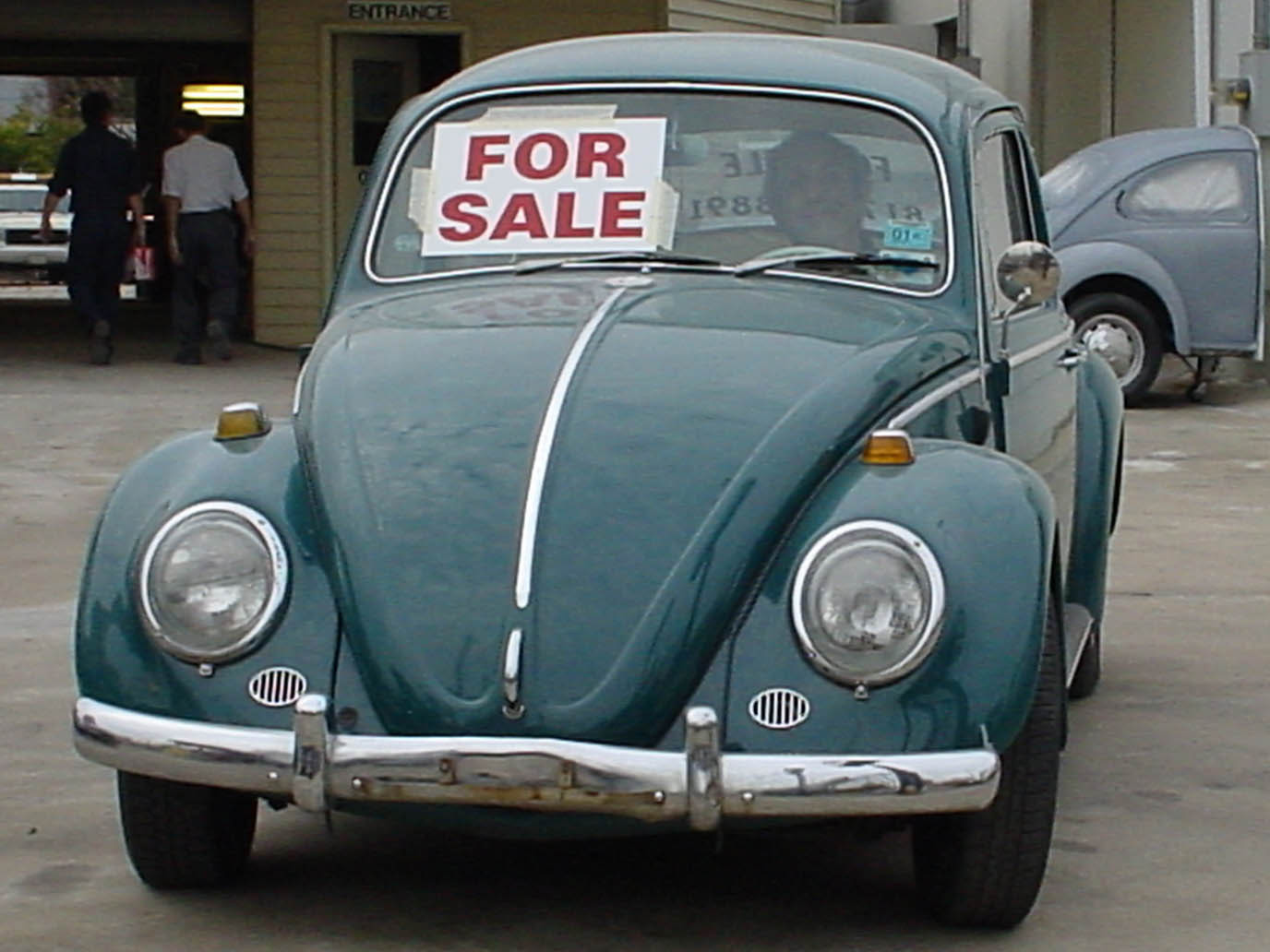
Understanding the Generations: YJ, TJ, JK, and JL 2-Door Models
The 2-door Wrangler has evolved significantly over the years, each generation offering distinct characteristics. Understanding these differences is crucial for finding the right model for you.
-
Jeep Wrangler YJ (1987-1995): The Square Headlight Era
- Key Features: Notable for being the only Wrangler generation with square headlights (a controversial design choice for purists). It introduced the coil spring suspension to the rear, improving ride comfort over the CJ’s leaf springs.
- What to Look For: Rust is a major concern, especially in the frame and body mounts. Engine options include the reliable 4.0L inline-six. These are true classics, often requiring more maintenance.
-
Jeep Wrangler TJ (1997-2006): The Return to Round Headlights & Coil Springs
- Key Features: Reverted to the beloved round headlights. Significantly improved ride quality with a coil-spring suspension at all four corners. Introduced the Rubicon trim level in 2003, offering factory lockers and more robust axles.
- What to Look For: Still susceptible to rust, particularly in the frame (often around the skid plate and control arm mounts). The 4.0L engine is a workhorse, but check for oil leaks. A highly popular generation for modding.
-
Jeep Wrangler JK (2007-2017): Modernization and Growth
- Key Features: Larger than previous generations, with a wider track and more interior space. Initially offered with a 3.8L V6, later upgraded to the more powerful and efficient 3.6L Pentastar V6 in 2012. More creature comforts and safety features.
- What to Look For: The 3.8L engine can be sluggish and consume oil; the 3.6L is generally preferred. Check for "death wobble" (a violent shaking of the front end), which is often fixable but indicates worn steering components. Electrical issues can sometimes arise.
-
Jeep Wrangler JL (2018-Present): Refined and Technologically Advanced
- Key Features: Modernized interior, improved on-road manners, and more advanced technology (Uconnect infotainment, LED lighting). Offers various engine options including the 3.6L Pentastar, a 2.0L turbo-four, and even a 3.0L EcoDiesel (in some variants, though less common for 2-door).
- What to Look For: Still relatively new, but check for any known recalls or service bulletins. These command higher prices but offer a more refined driving experience and modern amenities.
Key Considerations When Buying a Used 2-Door Wrangler
Purchasing a used Wrangler requires a careful eye. Here’s what to prioritize during your search:
- Rust and Frame Integrity: This is paramount. Inspect the frame thoroughly, especially near welds, control arm mounts, and skid plates. Check rocker panels, fender wells, and the floorboards. Surface rust is common; severe, penetrating rust is a deal-breaker.
- Maintenance History: A well-maintained Jeep is key. Ask for service records. Look for evidence of regular oil changes, differential fluid changes, and transmission service.
- Engine and Transmission:
- Engine: Listen for unusual noises (knocking, ticking). Check for fluid leaks. Ensure proper idle and acceleration.
- Transmission: For automatics, check for smooth shifts without hesitation or slipping. For manuals, check clutch engagement and listen for grinding.
- Suspension and Steering:
- Death Wobble: A common, alarming issue in JKs. While often fixable, it indicates worn components (ball joints, tie rod ends, track bar).
- Lift Kits/Modifications: Inspect aftermarket lifts carefully. Poorly installed or cheap lift kits can cause alignment issues, premature wear, and even safety hazards. Ensure all components are present and installed correctly.
- Tops and Doors:
- Soft Top: Check for rips, tears, faded fabric, and functionality of zippers and windows. Replacements can be costly.
- Hard Top: Look for cracks or damage. Ensure all mounting points are intact.
- Doors: Check for proper alignment and ease of removal/installation if you plan to take them off.
- Electrical System: Test all lights, wipers, power windows (if equipped), radio, and climate control. Modern Wranglers have more complex electrical systems.
- Off-Road Use Evidence: Look for scratches on the undercarriage, bent skid plates, or damaged differential covers. This indicates it has been used for its intended purpose, which isn’t necessarily bad, but means you need to be extra diligent about checking for damage.
The Buying Process: Where to Look and What to Ask
- Where to Look:
- Dealerships: Offer certified pre-owned options, financing, and often warranties, but typically at a higher price.
- Private Sellers: Often provide better deals and more direct insight into the vehicle’s history, but come with more risk.
- Online Marketplaces: Websites like Craigslist, Facebook Marketplace, AutoTrader, and dedicated Jeep forums are excellent resources.
- What to Ask:
- "Why are you selling?"
- "Can I see service records?"
- "Has it ever been off-roaded? If so, what kind of trails?"
- "Have any major modifications been done? By whom?"
- "Are there any known issues or quirks?"
- "Has it ever been in an accident?"
- VIN Check: Always run a Vehicle Identification Number (VIN) check through services like CarFax or AutoCheck to review accident history, reported mileage, and title issues.
- Pre-Purchase Inspection (PPI): This is non-negotiable. Have an independent mechanic (preferably one familiar with Jeeps) inspect the vehicle thoroughly before you buy it. They can identify issues you might miss.
- Test Drive: Drive the Jeep on various surfaces, including highway speeds, city streets, and if possible, some rough terrain. Listen for noises, feel for vibrations, and check steering response. Engage 4WD to ensure it works.
- Negotiation: Be prepared to negotiate. Use any identified issues from the PPI as leverage.
Estimated Price Range for Used 2-Door Jeep Wranglers
Prices for used 2-door Jeep Wranglers vary dramatically based on year, mileage, trim level (Sport, Sahara, Rubicon), condition, modifications, and geographic location. The table below provides a general estimated range to give you an idea, but actual prices will fluctuate.
Table: Estimated Used 2-Door Jeep Wrangler Price Ranges (Approximate)
| Generation | Year Range | Base Model (Good Condition, ~100k miles) | Rubicon/Higher Trim (Good Condition, Lower Miles) | Heavily Modified/Project |
|---|---|---|---|---|
| YJ | 1987-1995 | $5,000 – $10,000 | $8,000 – $15,000 | $3,000 – $8,000 |
| TJ | 1997-2006 | $8,000 – $15,000 | $12,000 – $25,000 | $5,000 – $12,000 |
| JK | 2007-2017 | $12,000 – $22,000 | $18,000 – $30,000 | $10,000 – $18,000 |
| JL | 2018-Present | $25,000 – $35,000 | $30,000 – $45,000+ | $20,000 – $28,000 |
Note: These prices are highly speculative and can vary by thousands of dollars. Heavily modified vehicles can sometimes fetch more, or significantly less, depending on the quality of modifications and buyer preference. Always research local market prices.
Customization Potential & Aftermarket
One of the most exciting aspects of owning a 2-door Wrangler is the endless customization potential. The aftermarket is brimming with parts, from suspension lifts and larger tires to bumpers, winches, lights, and interior upgrades. This allows owners to tailor their Jeep precisely to their needs, whether for hardcore rock crawling, overland adventures, or just a unique daily driver. However, be wary of poorly executed modifications on a used vehicle, as they can lead to costly repairs.
Potential Challenges & Solutions
While incredibly rewarding, owning a used 2-door Wrangler comes with its quirks:
- Fuel Economy: Wranglers, especially older models or those with larger tires, are not known for their fuel efficiency. Solution: Adjust expectations; it’s the price of admission for capability.
- Ride Comfort/Noise: Older generations and modified Jeeps can have a stiffer ride and more road noise, especially with aggressive tires and soft tops. Solution: Acoustic deadening, better suspension, or simply embracing the "Jeep experience."
- Security: Soft tops are vulnerable to slashing, and the removable doors make them easier to break into. Solution: Install security systems, lock valuables, and consider full doors if currently equipped with half doors.
- Maintenance: Jeeps are generally reliable but require consistent maintenance, especially if driven off-road. Parts are readily available. Solution: Factor in a budget for regular maintenance and potential repairs.
Conclusion
The used 2-door Jeep Wrangler remains a timeless choice for those seeking adventure, capability, and a vehicle with undeniable character. By understanding the different generations, diligently inspecting potential purchases for common issues like rust and modifications, and conducting a thorough pre-purchase inspection, you can confidently navigate the market. While it may present unique challenges, the freedom and camaraderie that come with owning a 2-door Wrangler make it an incredibly rewarding investment for the right enthusiast. Happy hunting, and may your trails be ever-open!
Frequently Asked Questions (FAQ) about Used 2-Door Jeep Wranglers
Q1: What’s the main difference between a 2-door and 4-door (Unlimited) Jeep Wrangler?
A1: The primary difference is the number of doors and the wheelbase. The 2-door Wrangler has a shorter wheelbase, making it more agile and maneuverable off-road, especially on tight trails. The 4-door (Unlimited) has a longer wheelbase, offering more passenger and cargo space, and a smoother ride on pavement.
Q2: Is a used 2-door Wrangler a reliable vehicle?
A2: Generally, yes, especially the engines (like the 4.0L inline-six in TJ/YJ models and the 3.6L Pentastar in JK/JL models). However, like any off-road vehicle, reliability can depend heavily on how it was used and maintained. Rust, especially on older models, and worn suspension/steering components from off-road use are common concerns to check.
Q3: What should I look for regarding rust on a used 2-door Wrangler?
A3: Focus on the frame, especially around suspension mounting points, skid plates, and welds. Also check the rocker panels, fender wells, floorboards, and body mounts. Surface rust is common, but deep, bubbling, or perforating rust indicates a serious problem.
Q4: How do I check for "death wobble" in a JK Wrangler?
A4: "Death wobble" is a violent, uncontrolled shaking of the front end, usually occurring at highway speeds after hitting a bump. While driving, feel for any looseness or excessive play in the steering. During a pre-purchase inspection, have a mechanic check the ball joints, tie rod ends, track bar, and steering damper for wear.
Q5: Are used Wranglers expensive to insure?
A5: Insurance costs vary widely based on your age, location, driving record, and the specific model year and trim. However, due to their higher theft rates and potential for off-road incidents, Wranglers can sometimes be more expensive to insure than comparable vehicles. Get an insurance quote before buying.
Q6: Can I daily drive a 2-door Jeep Wrangler?
A6: Yes, many people daily drive 2-door Wranglers. However, be aware that they are not as refined as many modern SUVs. Expect a firmer ride, more road noise (especially with a soft top or aggressive tires), and less fuel efficiency. Newer JL models offer a more comfortable daily driving experience than older generations.
Q7: Is it better to buy a stock (unmodified) Wrangler or one with modifications?
A7: For first-time buyers, a stock or minimally modified Wrangler is generally safer. You know exactly what you’re getting, and you can add modifications yourself to ensure they’re done correctly. If considering a modified Jeep, ensure the modifications were professionally installed and are of high quality, as poorly done mods can lead to significant problems.
Q8: What’s the best year for a used 2-door Wrangler?
A8: This depends on your priorities.
- TJ (1997-2006): Often considered the "sweet spot" for traditionalists, offering a good balance of classic looks, coil-spring comfort, and strong aftermarket support. The 4.0L engine is highly regarded.
- JK (2012-2017 with 3.6L Pentastar): A good choice for those wanting more modern features and power without the higher cost of a JL. The 3.6L engine significantly improved performance over the earlier 3.8L JK.
- JL (2018-Present): Best for those seeking the most refined ride, modern tech, and safety features, but at a higher price point.
